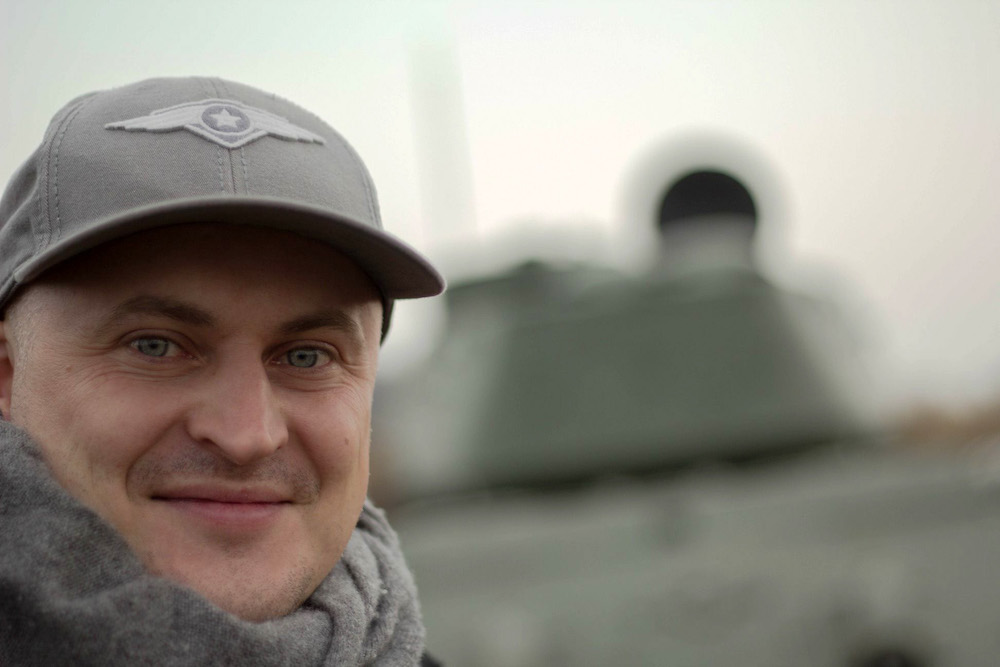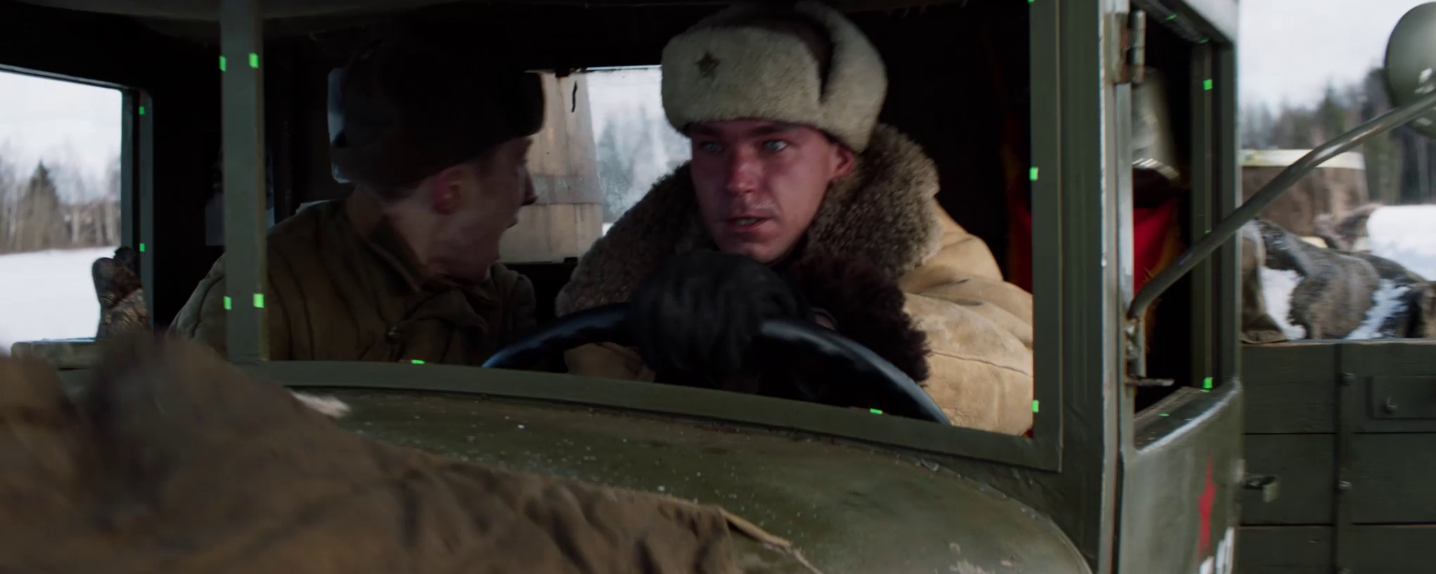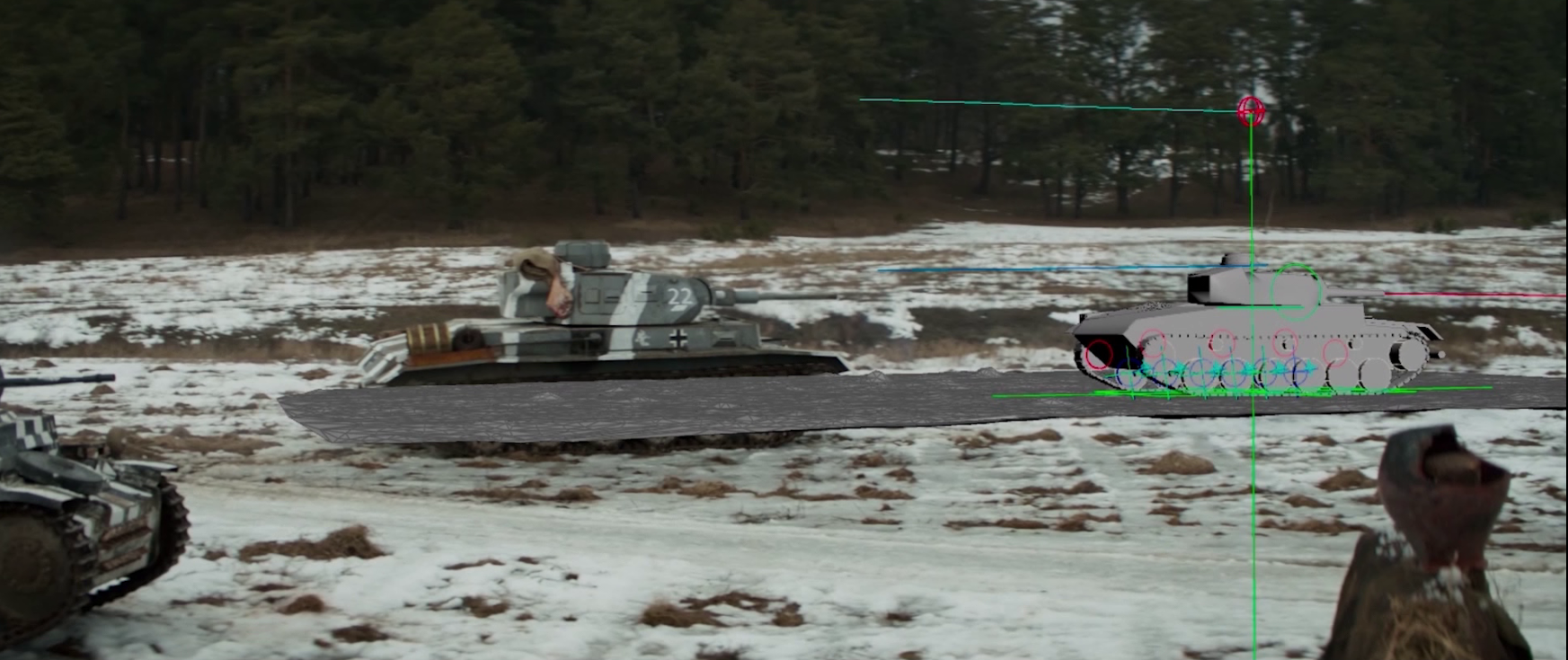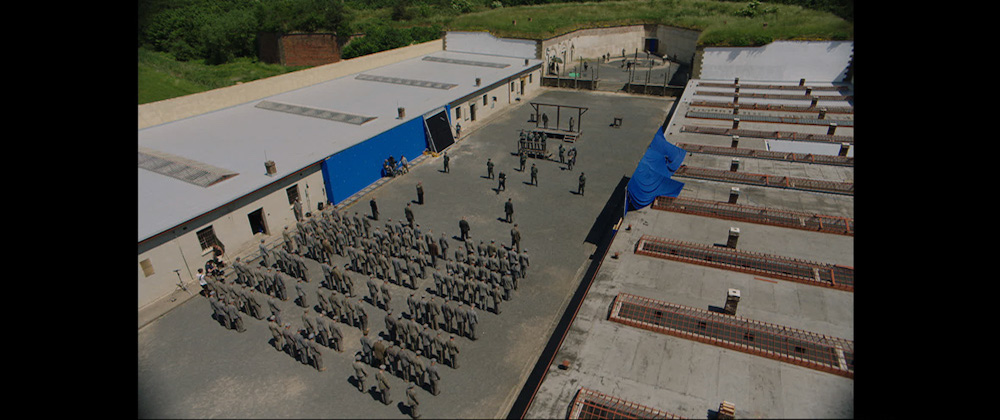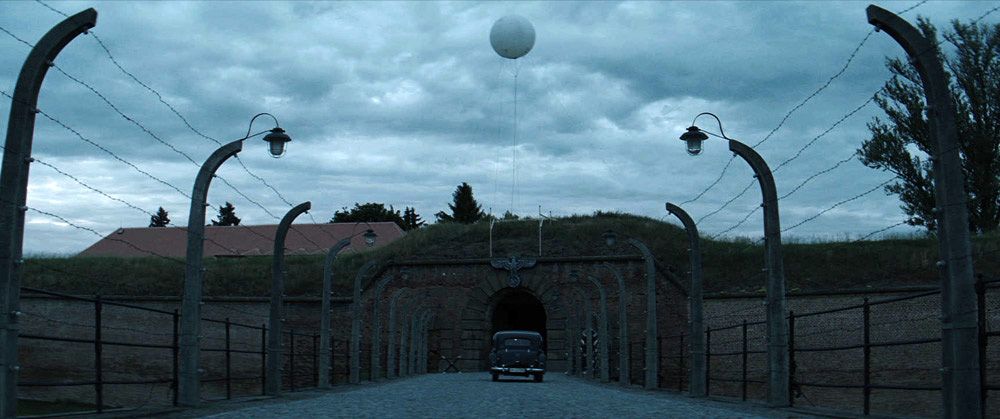A big interview with ALGOUS studio! CEO Alexei Gusev talks about Russian cinema, the film “T-34”, the future of the industry and off-screen difficulties of production and post-production.
So, tell me how you started out.
It all started at the university, when I accidentally got my hands on a floppy disk with a program called 3D Studio. I was studying to be a systems analyst — a rather unromantic profession. I saw myself as a programmer, an engineer of various computer networks and systems, and certainly didn’t think there would be any graphics in my future. I borrowed this program just to take a look at it. They said that it was used to make graphics and advertising for the whole world.
When I installed it on my 386th computer, I immediately became interested in graphics, and by the time I graduated from the university, I was already doing something in this program myself. Then I got a job on television in St. Petersburg, on Channel 51, I think. I was using computer graphics to make funny programs and ad breaks. It was all very naive and looked nowhere near decent, but it was a start that fueled my interest in graphics.
Later, I found myself at Lesta Studio. It still exists as part of Wargaming, a company that makes games about ships and all that. At that time, the studio specialized in advertising and video production for television. That was the moment when real graphics lessons began. I studied Maya and other programs in which you could do something serious.
During that time, I also met Sergey Tsyptsyn. We met in Moscow at Maya User Meetings, or MUMs. I started going to these meetings in Moscow almost every month to give presentations. There were no courses at that time, except for the school where Tsyptsyn taught. I was studying Maya by myself and would often adopt some methods on the go, so we had experience working with Maya which I shared at these seminars. Thus began our journey of mastering high-level visual effects software skills and tricks.
Anyone who works in advertising or makes videos has a dream of getting into the film industry. I had to wait several years for my chance. I worked in advertising for three or four years. Then, in 2000, I received an offer to come to a film set to help create things that were not suitable for live-action filming. They were shooting a TV show called Spetsnaz, which would later become very famous. They still rerun it every year. The cast consisted of major Channel One, movie, and TV show stars.
After that, I decided to leave Lesta Studio and started working at SVAROG FILMS, which offered me to form a visual effects department. I got the first three or four people on my team in 2001. We started going to film sets and making rather bold visual effects that almost no one used in TV shows back then. In 2006, our team decided to set up its own company called Algus Studio.
This was almost 13 years ago. Next year will mark my 20th year in the film industry and 21st in computer graphics [laughs].

Do you remember the first objects you created?
I do! It was a chessboard. I wanted to put some balls on it and make them reflect light, refract it, cast shadows… It was very primitive, but I was amused by the possibilities of reflection and refraction: everything that wasn’t simple and required some tinkering. There was no ray tracing back then that would have allowed this to be done with a single press of a button. I had to come up with some tricks, but it was interesting.
Nobody worked in Maya at that time, apart from a few people. Everyone used Max, After Effects, and so on. This is why Sergey Tsyptsyn’s school was so popular. It provided knowledge that wasn’t available anywhere else. This is the reason our group still exists. We meet regularly in Moscow and don’t forget about each other. Those were the good times.
Are you talking about CG-Event?
All these user meetings have long evolved into CG-Event and other large events. But back then, it was a cozy get-together of computer enthusiasts from all over the country that took place in a single room. Not a global event at all. It was as authentic as it gets.
And now the atmosphere is gone?
Now everything is too serious, too global. The echoes of that atmosphere can only be felt at CG-Event afterparties, when computer industry proponents who still remember the old days gather together in small groups. There were teams that knew each other even before I came to Moscow, but I was around for the most interesting part.
So what is lacking now? Soul? Or were the people different back then?
No, everything is as it should be. Pioneers always have a special drive. And when almost every studio has access to modern technology, that drive disappears. Those who stood at the origins of our industry interacted with each other a little differently. Nowadays, almost every studio has access to various technologies, programs, and online courses. They have the opportunity to work abroad, gain experience, and come back here to share it, or stay there. Back then, we didn’t have the qualifications to go work in another country. Today, there are a lot of talented specialists in all areas. Unfortunately, this leads to high personnel turnover.
Do you see it in your segment?
Yes, constantly, because we level up anyone who comes to us. We offer a serious, powerful start for any artist, give them the opportunity to work on large and successful film projects. It is natural and inevitable that people want to go live in another country.
Is there a shortage of talents in the industry?
Yes, but everyone decides for themselves. As for me, I made my decision a long time ago. I always knew that I could also go and work abroad. But staying here and becoming one of the first people who could change something seemed better than being a cog in the wheel of an industry veteran. Here we have a chance to come up with something new, which is exactly what we’re doing.

How many people work in your company?
The number of people varies from project to project. There were 30 of us recently, but now this number has been reduced to a little over 20. We don’t see it as something bad. After all, the key to success is having a backbone, a powerful core. Some people come and go in order to keep growing. Not everyone is comfortable working in our industry: we have a rather unpredictable schedule of ups and downs. There can be tons of work, strict deadlines, and then suddenly almost no work at all. Not everyone is comfortable with such extremes. Many people prefer stability to aiming high and pushing themselves to the limit, like we wanted to 20 years ago. We didn’t care how much we worked. We could live in the office for weeks. We didn’t ask for any compensation, because we felt the drive and recognized that we were doing something very important.
Now everything is much more down-to-earth. People value comfort and working conditions more than goals or projects. I’m talking about ordinary artists, of course. For managers and supervisors a new project is always a challenge.
How do you deal with it?
Just barely [laughs]. Deadlines are met at the cost of pain and blood, projects become more and more difficult. We can rarely use something old, because technology and software are constantly changing. This leads to poor time management and force majeures. The industry is still young, and competent planning can be a problem. Film producers don’t always understand how much time is needed to make graphics, so they sometimes force us into rather difficult circumstances.
How do you solve these situations?
We improvise. Some projects are so good that when we see the rough cut, when we know who the director and producers are, we feel motivated by the product. People get second wind and motivation to work more and be more creative. Personal qualities of supervisors, producers, and directors also affect how motivated the artists are.
For example, we finished the movie T-34 with great difficulty. It was a very complex project with many unpredictable tasks, but when they finished filming and we saw the rough cut, we knew that the movie would be very good. It inspired everyone. We knew we had to give our best for a movie like that.
However, this didn’t save us from the deadline: the amount of CG required grew with each day. We had to change a lot of things in the process. The amount of unfinished work that had to be wrapped up before the movie’s release kept growing, so the last months were very intense for everyone. Our company also supervised seven other firms and many freelancers. It was difficult in every sense: logistically, creatively, and technologically. But we knew that the movie would be good, and it helped (laughs).
T-34 was a special project. You filmed inside a tank. Can you tell me more about why this project was unique? What life hacks did you use?
The most interesting decision was to shoot inside a real tank. Based on what we saw in foreign tank films, they were usually shot inside mock-ups, sets that were built for the operators’ convenience: light, cameras, freedom of movement. Filmmakers try to create the most comfortable working conditions for themselves. And a real tank is uncomfortable for both the film crew and the actors.
This is precisely what played the key role in our decision to shoot inside a real tank. Discomfort wasn’t bad, it made things more realistic. There was no danger of a real battle, but the actors could have a more natural experience. The tank was moving, they were controlling it themselves. There was no operator or director nearby, only five cameras. The tank was moving on rough terrain, so the actors were forced to shout over the roar of the engine. They would bang their heads against the walls during sharp turns, and they could barely hear commands on the walkie-talkie. It was pretty uncomfortable, but much more convincing than shooting in a cozy and warm studio.
When we saw this on site, we were amazed by how much different it felt from what we’ve seen before. The director was convinced this was the only way to shoot. Poor actors had to put up with it [laughs] and endure till the end. They had to spend 12 hours inside a tin can, in motion, in the cold. The atmosphere was jittery, because we had a tight filming schedule and needed to shoot a lot of material.
There were lots of nuances: for example, how the tank turned. The actor had to pull a specific lever, and everyone had to move in that direction, because according to the scenario, they were going left, not right. We couldn’t afford to be sloppy. Everything was done meticulously and painstakingly, as much as it was possible in a movie. That’s why the result was so convincing.
We also used a lot of other know-hows. Including the decision to use CG only for many scenes. We didn’t plan this in advance. We always hope to shoot as much live-action material as possible, we don’t use computer graphics just for the sake of using it. An experienced visual effects supervisor should strive to saturate a movie with visual effects it can’t exist without, not spend energy on things that would have looked more convincing as live action.
So at first we decided that we would shoot a lot of live action. However, in the process of filming we were faced with circumstances that made this impossible. For example, all the scenes where the tank is being pursued by an airplane across the meadows, fields, and roads… We realized that we just wouldn’t find the necessary landscapes, that we would never get permission to bring a real T-34 tank along with some German howitzers to the Czech Republic and shoot it all from a quadrocopter. Everything was so difficult to organize that I had to make a decision to make these scenes fully CG. It was a rather risky plan, because in Russia, no one had ever created so many complex environments and tank scenes with all the details and special effects convincingly enough. The director and producer understood that there was no other way and agreed with me, but we had to put our money where our mouth was [laughs]. We put a lot of effort into making the CG as convincing as possible.
I can’t say that I’m absolutely satisfied with the result. You always want to do more and better, and always think that you need three or maybe two more months to make everything perfect and how you want it. So I am not 100% satisfied with our work. But this is inevitable. It has always been like that, and I hope it remains that way. I will never be completely satisfied [laughs].
The directors who work on such complex projects can also demand a certain level of perfectionism that you need to strive for, even if it seems irrational. If the director says so, you have to agree with him, sometimes reluctantly. Aleksey Sidorov turned out to be much more of a perfectionist than I expected, so we had to work hard to meet his ideas of what needed to be done in T-34 and how. So I think that he, just like me, also wasn’t satisfied with some of the things we had to consider ready when we actually would have preferred to work on them for a few more weeks.
As far as I know, you used slow motion in that movie. What was the most technically demanding thing about it and how many shots did you make?
We made about 900 shots in total, and hundreds of Full CG. They were made by different studios, and we needed them to look more or less the same. This is a difficult task, despite the fact that 900 shots is not that much for a movie that relies entirely on the use of visual effects. But when we were preparing to shoot this movie, we weren’t planning to rely on computer graphics that much. We had a lot of complex shots that required R&D, long research process, and tests in order to achieve a result that would more or less satisfy the director. For example, the slow motion scene where a projectile flies into the tank and explodes into pieces, and its fragments should hit only certain characters. Such shots took more than two years to make: from the first tests, which involved penetrating tank armor with projectiles and splitting it into many different textures, and to the final version with all the nuances and actors.
In total we had about 15–20 slow motion shots. They turned out to be very different. Some took place outside and had only one geographical focus, for example, showing how expertly our heroes shot at each other through the house windows. Others were devoted to demonstrating something no one had ever seen before, like what happens when a projectile enters a tank.
Of course, one could say that slow motion was invented a long time ago. While this is true, it was invented mostly for entertainment purposes and for moving from one space to another, not for showing the horror and drama a tank crew experiences during battle. This is a completely different goal, even though it also involves an element of entertainment and the audience, for the most part, recognizes these shots as computer generated ones. They understand that it’s impossible to shoot something like that live. When we discussed this with the director, we decided right away to get ready for a wave of criticism regarding these shots after the film was released, because no one had ever seen something like this and it couldn’t be mistaken for live action.

We were ready for this and knew that our goal was not to entertain the viewer, but to show in detail how something like this happens and why in archive photographs we can see tanks with burned armor and towers that look like plasticine, and holes that look like a colander. People don’t think about how this happened and why the holes in the iron have such smooth edges. With these shots, were wanted to show the physics of this horror: the crazy speed, the huge bursts of energy, how everything is melting and you can’t hide from it, and how a single shot can kill the whole crew or miraculously spare them. There can be 20 holes in a tank, but everyone inside will be alive. There were such examples during the war. So no one can say that we lied. We checked the facts, did lots of research, involved endless consultants, and studied a lot of archive photographs. And we can say with confidence that we didn’t cross into the genre of fiction.
And there were projects where you crossed this line?
Yes. It happens with almost every project. More often than not, the main purpose of a movie is to entertain, not pursue some deep goals. That’s if we’re not talking about independent films. People usually just want to enjoy the movie, so directors and producers ignore the facts of life in order to please the viewer. They say, “We’re not filming a documentary, are we?” Everyone knows that you can embellish things a little, but in T-34, we stayed as real as we could: you can see discrepancies in the episodes only under a microscope.
When you work on large projects, you use the services of other studios. How do you manage to work with so many people involved in the process?
I think it’s because of my experience as a supervisor. When you’ve been working in the film industry and on sets for 20 years, you understand that certain decisions lead to certain results, and you can quite sensibly distribute a huge amount of work between different studios while maintaining an adequate budget.
The more you work, the more you can get involved with global projects. Because you already understand that a certain task requires two studios of a certain size, but only one studio in the country can do this difficult task, and they need to be booked in advance.The more you work, the more you can get involved with global projects. Because you already understand that a certain task requires two studios of a certain size, but only one studio in the country can do this difficult task, and they need to be booked in advance.
Knowledge of the market, friends in the industry, and supervisor experience allow me to accurately predict a movie’s budget and production time. This gives me the opportunity to competently manage the whole process, because I speak the same language as all the contractors and colleagues from other studios, and at the same time I can be a fairly reliable producer, an assistant who won’t spend the budget on nothing. Film producers don’t always understand the pricing in computer graphics. Few of them had close experience with CG, so they are easy to fool. To prevent this from happening, experienced people hire a visual effects producer who knows the market and can effectively allocate the film producer’s budget.
In the case of T-34, we have had a long working relationship with Aleksey Sidorov, and Ruben Dishdishyan also knew me well, so I was entrusted with being a visual effects producer and supervisor at the same time. They knew I would act in the interests of the movie and do everything to stick to the approved budget and produce the best possible result within that budget.
I would really like for the profession of a visual effects producer to take root in our country. It is currently a rare phenomenon. The film company usually hires a single studio, which then tries to work within the agreed budget and outsources something if it can’t. But when you know in advance there will be too much work for a single studio to handle, it’s better to hire not only a supervisor, but also a visual effects producer.
The reason is that this is a separate job. You have to find vendors and contractors for a huge amount of different work, reach an agreement with them, discuss the pipeline (that is, the production process): what programs will be used, how it all will be transferred, where it will be rendered. It is important that everything coincides, that money isn’t lost anywhere, and that one thing is not done several times. A visual effects producer should understand all this, and only then will all the money allocated for CG be spent truly efficiently.
For example, when I worked with Pasha Semerdzhyan on Salute 7, he solved a huge number of issues as a producer, it was very convenient and greatly facilitated my work as a supervisor. And when we were filming T-34, it was actually quite difficult for me to do these two jobs simultaneously. Two people inside me were constantly arguing with each other. One would say, “It’s cheaper here.” And the other would answer, “No, I can’t, the quality will be bad.” The first kept repeating, “Who cares about quality?” And the second one would say, “No, I can’t screw up.” That’s how I talked to myself at night instead of sleeping [laughs].
Do you spend a lot of time on site?
When I take on a project that relies heavily on the use of visual effects, I’m there all the time. This isn’t necessary in all films: a large amount of work can now be done without having a supervisor on site, because, thankfully, both cameramen and directors often understand CG and know what elements can be removed from the shot without calling the supervisor.
When we filmed T-34 and Salute 7, I was constantly on site. When we were working on T-34 from 23 February 2018 and until July 2018, that’s almost half a year, I was almost always near Moscow or in the Czech Republic. Every day we were faced with serious issues: how to show objects that are not there. That’s why I had to always be on site.
Do you like your work or are you already growing tired of it?
I only survive because I love this process [laughs]. I especially like the development process, the pre-production period when everything is only just starting and we haven’t yet encountered anything bad. We do animatics and storyboards and dream about how we will film everything and how cool it will be. This is the most romantic and wonderful period. Then the filming begins. It’s much more complicated and way less romantic: you need solid physical stamina. The filming is followed by post-vis, which is also a more or less creative period. At this time, the editing is not yet finished, and they need to make it final using our preliminary work. That’s when we can still come up with something, create animations, add something to the shot that didn’t turn out so well, and fix a few things. And then mass production begins, and there is nothing sentimental about it. It’s a pure race for survival. Now this is when it gets really hard and I start wishing I could switch to another project [laughs].
How often do you go on vacation with a schedule like that?
Last year, for the first time in my life, I went on vacation for a little over a month. I had never taken such long breaks before. It was always two weeks tops, during which I only had the time to exhale. I didn’t even have the time to catch up on sleep. And that time, I took a good chunk of winter and turned it into summer. This happened as we released a quite successful movie, and it was like a balm for my soul: it meant that I was right to go on vacation and that all that effort wasn’t in vain [laughs]. I’m grateful to everyone who took part in that project. We made a showreel and published our work.
Where do you get your inspiration? If you look for it at all.
Inspiration comes from doing something you love. It’s the only thing that helps us survive the deadlines, because we know that the difficult times will be over, and that they will be followed by a more creative and inspiring period. So we endure from one wave to another. No work can be equally pleasant in all aspects. Even creativity has its own routine moments: any musician has to learn the parts of his instruments, study a lot, learn things by heart, play, and wear down the skin on his fingers. All of it to be able to play freely and enjoy the process. Our profession is the same. You have to work hard.
Have you had any small but interesting projects that you rarely talk about?
Over the years, we helped make many different films. There are projects that get way less attention than they deserve. For example, three or four years ago, we made several shots for a simple movie called I Won’t Return, commissioned by Sergey Selyanov’s company, STV. It was a touching story about two girls who escaped from an orphanage. We didn’t work on the set, everything had already been filmed. They came to us for help during the post-production stage. I was at the premiere of this movie, and I really liked it. Movies like that are remembered with warmth. There should be more of them. What I mean is, not all our work should be about complex and expensive computer effects from which we make money. Part of what we do should always be about movies that you want to rewatch. And the more such movies there are, the more inspiration we get for routine things.
I also really liked working on Anyai Melikyan’s movies Mermaid and Star, the movie Mongol, Alexander Sokurov’s movies, Salute 7, and, of course, T-34. I’m grateful for the projects that make me feel like it wasn’t for nothing. As for the movies that don’t turn out so outstanding or warm, well… They become just a craft. There is nothing wrong with craft, it also has a place in this world.
What are your favorite movies?
My favorite movie is Forrest Gump. Surprisingly, it uses a lot of CG for which it even got an Oscar. At the same time, I don’t want to watch it too often so as not to get tired of it.
I also really like Mr. Nobody, and that’s a movie I’m ready to watch again and again. And every time I watch it, I discover something new that I haven’t noticed before. It combines outstanding directing and the work of many departments with great acting, camera work, and music. This movie is good no matter which way you look at it.
There are so many movies that I’d watch again and again. They are all unique in their own way, so I can’t really rank them. Although they don’t have the sophisticated technology of Forrest Gump and Mr. Nobody. These are almost all of Tarkovsky’s films, especially Stalker and Andrei Rublev, Daneliya’s Kin-dza-dza!, Tears Were Falling, and Mimino. They all resonate with me. And, of course, the works of Zakharov and Ryazanov… [laughs]
Do you try to save your time by not rewatching movies?
You know, there are so many movies I haven’t watched yet. It would be enough for a lifetime. I always try to fill the gaps and watch the films that I’ve missed. You could probably call me a “well-watched” person. I’ve seen almost everything from IMDb’s Top 250 list, including some Indian films. I watched them and I wasn’t disappointed. The Indians make touching, kind, wonderful films. As for rewatching something, I think you should do it either for the soul or for learning: for example, sharing the pleasure of watching a movie that I’ve already seen with my son.
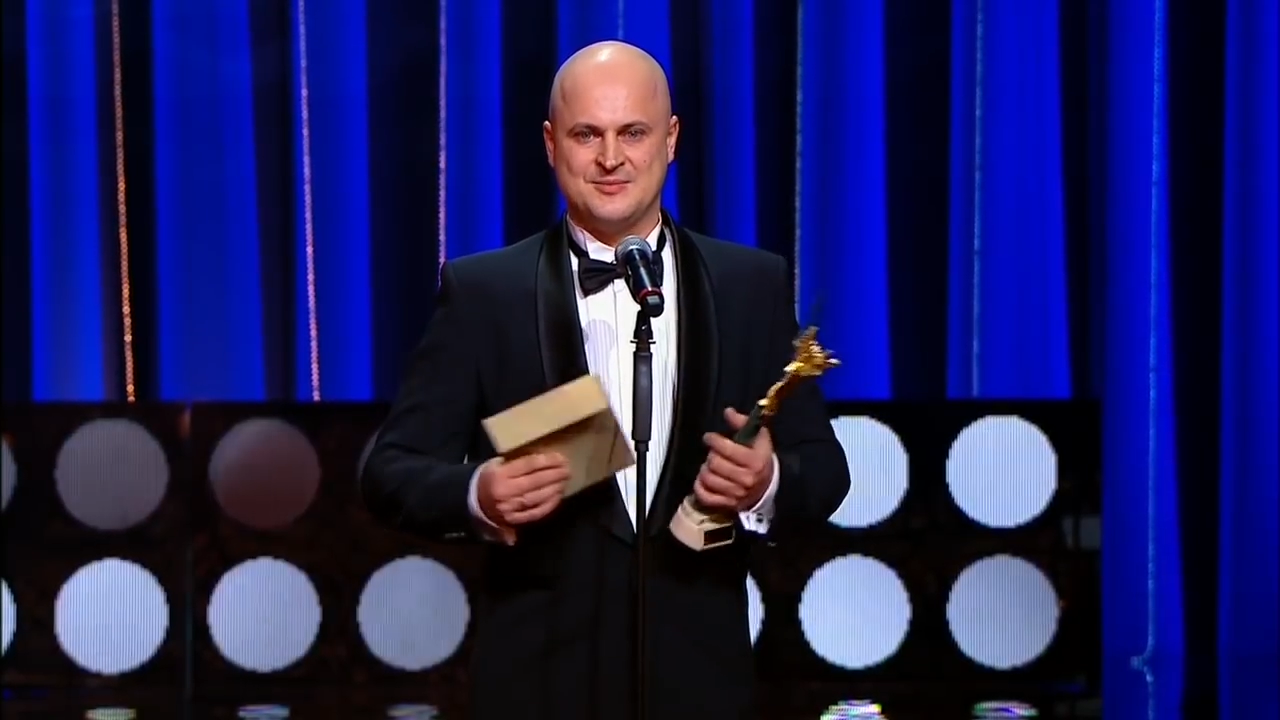
Do you have an Oscar yet?
With our profession, it’s hard to count on getting a foreign award. Our industry is still quite young. Russian movies received some prizes at all major international film festivals: Faust got the Venice Festival’s lions, Mongol was nominated for an Oscar. This suggests that, thank God, our movies are quite good. But in order for our work, specifically, to win an award abroad, the whole industry needs to grow.
In your Internet posts, you write that you are proud that the President of Russia has seen your movies, and that you would have something to share with him if you could have half an hour of his time. Care to elaborate?
I have a whole list, but if I could easily share it with the whole world, I would have done it a long time ago. The fact is, not all ideas can be brought to life without help. Of course, we must do what we can ourselves and not count on anyone else. That’s what I do and what I’ll keep doing. But I have a list of almost ten ideas, and each of these ideas requires a rather painstaking amount of effort. One or ever two of these ideas are quite outstanding and simply cannot be implemented without the support of the state and artistic institutions, such as museums and historical societies. This project simply can’t happen without them. Some things require you to either go all in or not do them at all. This is why I’m not making these ideas public. I don’t want to implement them with makeshift means. But I’m working on them. Polishing them. And I think there will come a time when the energies and needs of the outside world coincide with my wishes, and everything will work out.
About your wishes… Do you have any need for improvements to Cerebro? How often do you use it? Which features do you like, and which ones cause pain?
Mirada sometimes refuses to play files normally and can be terribly slow. Where other players can easily stream a video during rendering, Mirada dies, and this is very annoying.
There are also a couple of more subjective things. Some users think that Gantt charts can be used to plan projects and not just keep records of them, as Cerebro is primarily used right now. Cerebro could be turned into a more powerful tool. For example, if it was possible to watch the assembly cut of the episodes: not only shot by shot, but also several dailies combined into a cutting phrase.
I could name a lot of things that would be very useful to movie specialists, but absolutely useless for programmers or anyone else. To make a list of all suggestion for Cerebro, we need to write down everyone’s complaints and prioritize them by what is really painful, and what is more of a matter of taste.
In general, yes, we use Cerebro on a daily basis in all our projects. This is the only tool we use to streamline our work with different vendors and interactions inside the studio. We have created a bunch of different features that allow us to watch the shots during assembly, and to conveniently import and export projects from Cerebro: we generate Excel spreadsheets and then import them to Cerebro along with various tasks and subtasks. This is an automated process, and it would have been amazing if all of it could be done in Cerebro itself.
Many people also criticize Cerebro for the fact that there are other systems which make visual evaluation of the production process easier. Cerebro makes it quite difficult to operate big data and nodes: the resulting picture is not very informative.
When did you start using Cerebro?
It was a long time ago, as soon as it became easily available. We had no difficulties implementing it, except for some minor technical aspects.
